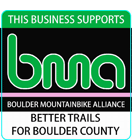You Don't Always Get What You Race For
/printed in Snatch Magazine
The 2002 Montezuma’s Revenge 24 Hour Mountain Bike Odyssey was as inspiring as it was enlightening. Inspiring because this race is always full of challenges, as the hardest race I race each year, and enlightening because I wasn’t planning to learn all the things I learned as the race progressed in what seemed like a 24 hour eternity.
9 days before the Revenge I was packing to drive to Brian Head Utah for the Brian Head Epic 100, another mountain bike race that was 100 miles of primarily single track and rough terrain. That’s when I got the crazy idea to enter the Revenge, last minute. How bad could it be? If I can get through the Epic 100 race with little difficulty and all in one piece, then I’ll race the Revenge. My decision would be made as soon as I got back home and could unpack and repack my bike and equipment.
Looking back now, I must have been crazy to decide to enter Montezuma’s Revenge just 9 days before the race started. I had my doubts that I would have enough time to recover from the Epic 100. How would I pull a support crew together in such a short amount of time? The logistics would take some finessing and I would have to pull together much of the equipment, clothing, and other gear from last year’s Revenge race. Last year’s race was a year where all my focus, attention and hard training paid off. I won the race and matched the women’s distance record.
he fact that I won the Revenge last year was also the reason that I intentionally did not plan to race the Revenge this year and the very reason I entered the race as a last minute contestant. The Revenge takes a lot of training time and devotion and therefore can conflict with many other summer races. All racing season I was content to put the Revenge behind me and compete in other racing events. Or was I?
As the Revenge got closer and closer I began to miss my Montezuma friends. To miss training where modern life seems to have stood still. To feel a little like I was not even going to try to defend my title. I began to feel a little left out. I realized that I was not content to just sit by while some thing that had become so much of my life and summer experience passed me by. My decision was made. I was entering the Revenge for my 4th year.
With the help of my husband (my mechanic and pacer), sponsors (DeuterUSA packs paid my entry), and friends (my crew/pacers), 4 days before Montezuma’s Revenge, I was repacking all of my equipment, food, and gear.
It felt like coming home when we got into Montezuma on Friday morning. I know so many people in Montezuma now that it feels like I grew up there. I even knew some of the racers from the early years of the Revenge from watching them on TV and idolizing them before they ever even heard of me. That’s one of the reasons this race is so unique.
Another unique feature of the race is the start. We all line up and wait for the dynamite to blast and start us on our way. I’m always nervous at the start but know that once the race is under way I will relax and let my body get used to pedaling towards the long hours ahead.
This year I was feeling better in the start than I had felt in all the previous years. I had been riding a lot of miles this year and was used to a lot of climbing on the bike. The key words are ‘climbing on the bike’. I had been training and racing for so many 100 mile races that my body was very used to saddle times of 6-10 hours.
By dark I was feeling great and loving the single track terrain which was newly added for the 2002 race. I enjoyed the exchange of 1st and 2nd places and began to think that I had indeed recovered from the race the weekend before and that all was on track for an excellent race. I knew that the race becomes very important as we head over Grays Peak, or Loop 5 as many call the Grays Peak ascent.
Once off the single track we head on to pavement for the rest of Loop 4. No worries, a quick wheel change, some food and off we go to on the bike path around Frisco, Dillon, and Keystone. Once we leave Keystone we head up to Loveland Pass, back down to Keystone and back up to Montezuma. The ‘easy’ part of the race, I’m thinking. Time to eat, drink and make up time on the smooth pavement before Loop 5.
Here’s where the race got interesting and enlightening. I thought of this section as the part that would allow me to get some recovery time in. It was this new section of road that interested me enough in this year’s race to enter last minute. Taking out a climb and hike to 12,700 + feet was enticing enough for me to assume that this would make the Revenge a little ‘easier’ and some how add back the disadvantage of having raced the weekend before and of course, having had little preparation needed to enter the Revenge.
My climb to the top of Loveland Pass was on schedule and I felt great enough to have a lot of food at the summit. Everything was going as planned, we had assumed. I put on the necessary clothing to make my way down the pass and progress to the end of the ‘night loop’ known as Loop 4.
What exactly went wrong next is only speculation. How do you speculate over something that you had anticipated only having it go awry anyway? Looking back now we know there were many catalysts to the problems that came next.
On the descent to the bottom of the pass I became hypothermic. As this had never happened in the race before, but I have been unbelievably cold in the Revenge, I assumed that ‘it’ would go away after sitting in the car for several minutes and the resuming of riding up towards Montezuma would warm me up again.
This action actually seemed to make me colder, more nauseous, and more mentally out of it than the Revenge normally makes a racer. All I could think about was getting done with the loop and getting onto Grays Peak and trying to get my 1st or 2nd place back. I had been told that I was in third place and my thought was that the race was not even at the half way mark and anything can happen, and usually does.
The climb up Grays seemed to take me forever. For every step I took closer to my goal, was a step towards getting sicker and sicker. I was actually falling asleep while hiking. If it had not been for my pacer telling me to “walk” I would have sat down right there and taken a well needed snooze. I knew I was now looking at surviving the race and keeping my goal mantra on “one step at a time”. I’m not a quitter but I can tell you that I have never had to force myself to continue a race just to say I wasn’t a quitter. Now was the time to dig deep into all the years of racing and see why I became a bike racer and enjoyed the last 12 years of racing. You might say getting to the top of Grays Peak, a peak I have climbed some 12 times or so, was the most enlightening thing I can remember doing.
Enlightening because had the climb to the summit gone as planned, I would have come down the other side, gone onto loops 6, 7, and probably finished somewhere on 8. Just like all of the previous years I’ve raced in the Revenge. It would have been one more Revenge year and I would have just added another race to my resume. Nothing lost and the gain would have been that all the previous years of training for this great race would have been a predictable indicator of what I can accomplish if I set my goals on it.
Instead, I learned that predictability can equal complacency. That to continually know and expect a certain outcome of what we do can leave us less challenged, less able to handle change and conflict. We become comfortable and seek those things that we know and some how think we can control. These are all the reasons that I began to race. I wanted an arena of continuous challenges. Racing takes us out of our own environment and throws life at us. All the things we think we can control but have little influence over. Like hypothermia when you have no reserve you have to make changes to deal with the unexpected.
Racing like life is full of twists and turns. We get to choose how we deal with it, or not. We get to decide if we want to continue to face the challenges or quit. I have never quit a race that I was physically capable of finishing. This is not to say that I haven’t wanted to quit before. I feel that if you quit once you will find a reason to quit again. Like life there are always new challenges to climb, defeats to overcome, and reasons to quit. What would be the fun in quitting? I find the challenge is in the fact that I can choose the direction I want to continue whether it was my original intention or goal. When the unexpected happens I really try to dig deep and find a new meaning to the new challenge.
What I learned at the top of Grays Peak was not that I could ‘hurry’ and catch the other women. It never occurred to me that I just didn’t have enough physical energy after racing the weekend before and not having the necessary preparation for such a race like the Revenge. I realized that I race because I find it truly helps me live my life in an exciting way and in a way that I might otherwise find complacent or mundane.
I came off of the Grays loop knowing that I would continue the race to the end of the 24 hours. I would eventually finish Loop 6 and continue through most of Loop 7. I was no longer in contention for anything but my pride and stubbornness. I had learned something more valuable than winning the race the year before. I learned that all of my years of racing experiences were what kept me going. It wasn’t about winning and it wasn’t about not winning. It was about not loosing by quitting just because I couldn’t control the outcome. Isn’t this a lot like life?




